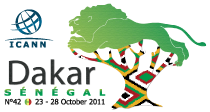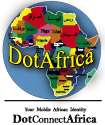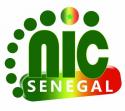
Local Time - Dakar
| Senegal | Tue, 05 Jan 2016, 20:14 |
Links
About Dakar

Visited by more than 700,000 tourists per year, Senegal is a country open to the world. Its geographic location makes it a privileged platform, and a gateway in West Africa. Renowned for its quality of life, the capital, Dakar is located on the Cape Verde peninsula that juts into the Atlantic Ocean. Dakar is a vibrant, lively city, where many international meetings are held. Discover the enchanting Senegal!
Senegal's Main Attractions:
Goree Island
A visit to the Ile de Goree is a must. This small island just off the Dakar coast is the epicentre of the African slave trade and a tour around its interior is an experience almost beyond words. Built by the Dutch in 1776 the House of Slaves held captive millions of men, women and children over a three and a half century period before they were sold into a life of servitude, shipped to the Americas, passing through the ‘Door of no return'. In 1978 the island was listed on the world heritage list by UNESCO. Despite its dark history, today the island is a peaceful place and is one of Dakar's most visited tourist sites.
Saint Louis
Listed on the UNESCO world heritage list in 2000, Saint Louis is distinctly French colonial, still preserving much of its 19th Century structure. Thanks to its unique appearance, International music festivals such as The Saint Louis Jazz Festival and its many cultural exhibitions, Saint Louis is rapidly growing in popularity as a 'must visit' tourist destination.
La Reserve de Bandia
65km from Dakar you will find the privately funded game park - La Reserve de Bandia. 1000 hectares of protected land which offers visitors the opportunity to view some of Africa's wild animals up close. The park is home to giraffe, buffalo, rhinos, crocodiles, antelopes, monkeys and many more. There are also some interesting cultural landmarks to be discovered. An ancient Baobab tree within the reserve marks the resting place for the remains of celebrated local griots and there are also some Serere burial mounds.
Pink Lake
One of the most frequented spots along the Cap Vert Peninsula is Le Lac Rose. One of nature's rarest phenomenon; the lakes unique pink colouring is caused by high mineral concentration and millions of micro organisms inhabiting the water. The lake is surrounded by sand dunes, baobab forests and villages. The lake is a vital source of income for the villagers, who can be seen daily using traditional methods to extract salt from the bottom of the lake to sell to the cities.



















